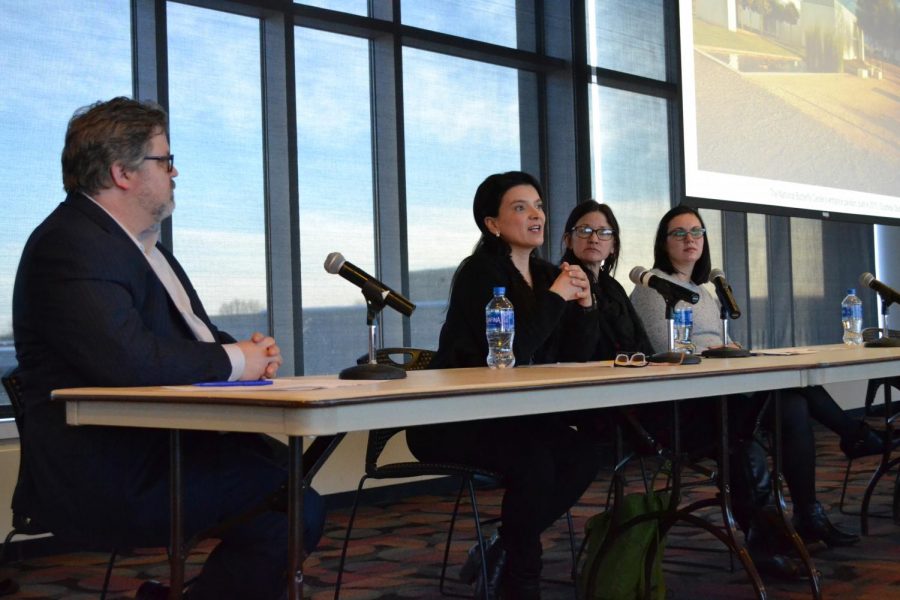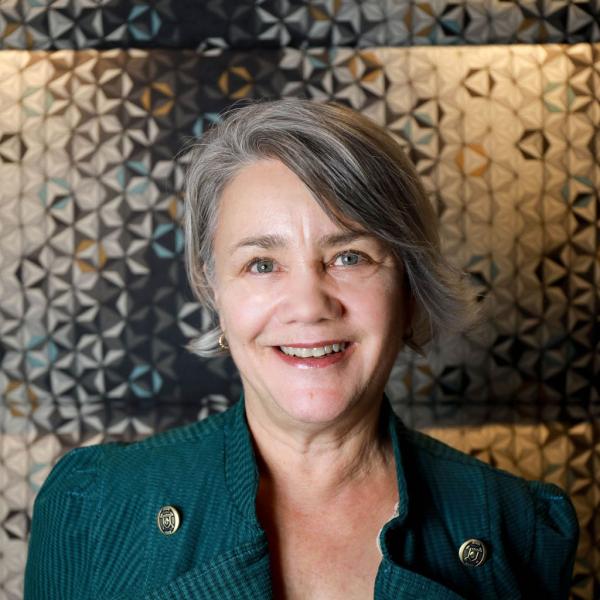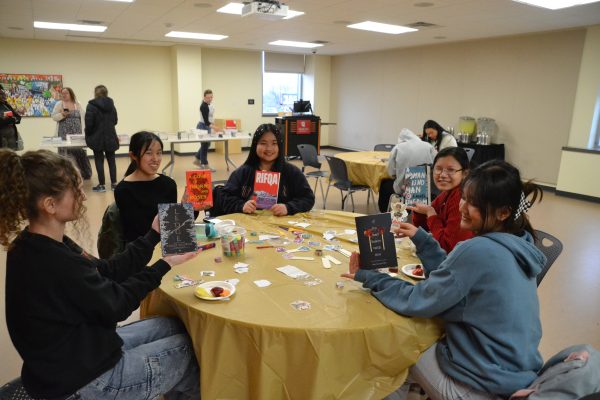Panelists paint bleak picture of “The Wall”
The event hosted four panelists who have unique insight about the technicalities and logistics of building a wall along the U.S. and Mexico border.
Panelists answer questions asked by students and staff.
March 6, 2019
The idea for the English Learners in the Mainstream (ELM) talks came from an article about butterfly migration.
“I had just read an article about the monarch butterfly population,” said Amy Stolpestad, Director of ELM. “I didn’t even realize that there was actually an environmental component to [the border wall].”
Stolpestad and Michelle Benegas, faculty lead and Principal Investigator of ELM, both come from English as a Second Language (ESL) backgrounds, but do not claim to know everything about immigrant and refugee communities.
They want to advocate for ESL students outside of the classroom as well as in.
“We can talk about these things at a very general high-level sense that yes, these things impact classroom instruction, but beyond that, we can’t. We don’t want to be nor do we pretend to be the voice for immigrant and refugee communities,” Stolpestad said.
Deconstructing the Wall: Humans, Animals, Law, Land was originally scheduled for Feb. 20 in Kay Fredericks Room but was postponed until Feb. 27 due to snow.
The first panelist was Marina Aleixo, a Program Director in the College of Education and Human Development at the University of Minnesota, who leads student trips to the southern border and is interested in studying the experiences of immigrants and refugees. Aleixo and her students partner with an Arizonan organization called No More Deaths to drop jugs of water in the desert to prevent cross-border migrants from dying of dehydration.
She also spoke about the toll a barrier is already taking on indigenous communities.
“Something we often forget is that there’s First Nation land within the Mexico and U.S. border,” Aleixo said. “Now due to considerations of national security, the U.S. government has built gates, walls, and barriers. They surveil who comes and goes. So that, of course, has larger consequences of U.S. treaties with First Nations.”
Patty Born Selly, another panelist and an associate professor of environmental studies, delivered bleak facts about the possibility of a border wall.
“There are over a thousand animal and insect species whose lives and possibly populations are threatened by the wall. 400 plant species will be impacted by it and of those numbers, 62 plant and animal species are either endangered, critically endangered or vulnerable.”
Michael Hatting, a real estate attorney with the firm Stinson, Leonard, Street, anticipated some kickback from Trump supporters who own borderland who support both private land rights and construction of the border wall.
“The federal government is going to have to have enough money to pay all the landowners and then also deal with the [legal] challenges,” Hatting said.
He cited the 2006 Secure Fence Act, an act signed into law by President Bush in which 700 miles of physical border wall was to be built.
“There’s still dozens of cases pending [on price of private land] over ten years later.”
Ana Pottratz Acosta, associate professor at Mitchell Hamline School of Law, provided some clarity on the current state of asylum law. A person can apply for asylum if they fear persecution from the government in their home country, or from groups that the government will not or is unable to protect them from.
The U.S. government has engaged in a practice called ‘metering’ at ports of entry into the U.S. where only a certain number of people a day may present their asylum claims.
“I was in Tijuana in December, and I was at one of the busiest ports of entry to the United States and they were only allowing forty people per day, which is pretty astonishing.”
The purpose of this event was to have a deep look into what a border wall would mean for communities of landowners, animal and plant populations and indigenous and asylum-seeking people.
“How can we expand upon our expertise, and how can we hold up the voices of our local immigrant communities?” Benegas asked.






